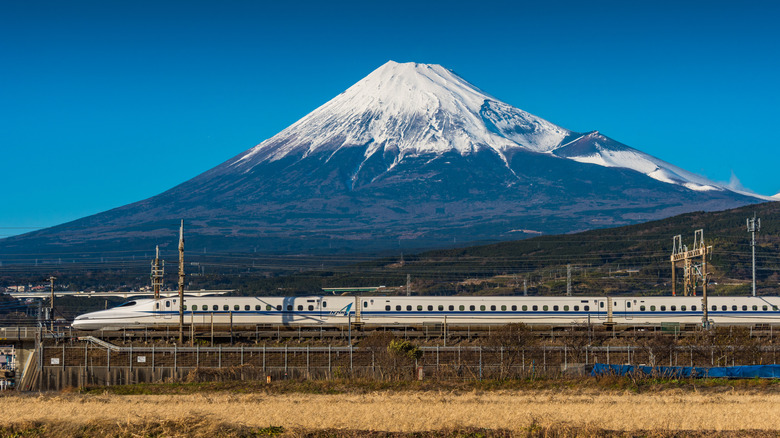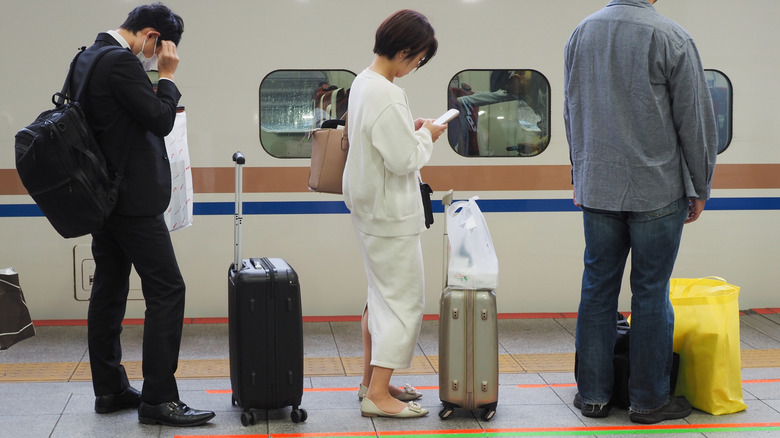Forgetting To Buy This 'Extra' Ticket For Japan's Bullet Train Is A Costly Tourist Mistake
If you love passenger trains, Japan's railroad system looks like a dream. At least 17,000 miles of tracks crisscross the country, connecting megacities like Tokyo and Osaka and myriad smaller communities in between. The famous Japanese bullet trains, or Shinkansen, can accelerate to a top speed of 200 miles per hour, and more than 1 million people ride high-speed rail every day. They're also safe; since their arrival in Japan half a century ago, the train system hasn't experienced a single fatal accident.
However, foreign travelers in Japan sometimes hit snags. For starters, there are many different kinds of trains, from underground subways and on-street electric trams to local and regional railroads. These are further divided into different railroad companies, and each works slightly differently. On some lines, there's a color-coding system for different types of reservations, and certain cars are designed only for female travelers.
One of the most confounding issues: Buying two tickets for a single Shinkansen ride. Travelers are constantly flummoxed by this strange practice, but it's an important one to know ahead of time. If you're already in the train station and start to use a digital vending machine, you'll purchase the "basic fare" ticket, but you will likely also have to purchase the "limited express ticket." Even this second ticket is divided into two categories: reserved and non-reserved. The former costs a little extra but assures you a specific seat, while the latter is slightly cheaper but may require you to stand. Failure to present the limited express ticket to an attendant will require you to pay onboard, often for an inflated fee.
Stay calm and carry two tickets – or buy a pass
Rest assured that Japanese railroad attendants are pretty accustomed to foreigners getting confused, and you'll probably only make the two-ticket mistake once before mastering this quirky system. No one will throw you off the train or call the police; you might just have to pay more than you bargained for. If you just can't figure out the digital kiosk on your first go, there's likely somebody around who can help you. Note that this all gets even more complicated when you have oversized baggage, including large sporting equipment.
There are two ways to avoid this whole scenario. The first is to purchase your ticket online, using a dependable website like Klook, Ekinet, or SmartEX. This is ideal for travelers who know where they're headed in advance, or even just the night before, and are using an activated smart phone while traveling. Another option is the Japan Rail Pass, which costs a good amount (over $300 for 7 days, or about $500 for 14 days) but usually provides comfier seating and could save you money in the end, if you plan to use Shinkansen a lot.

